Imagine this: You’ve just launched a new product—a sleek, eco-friendly water bottle. But sales are slow, and you’re not sure why. Is it the price? The design? Or maybe people just don’t care about eco-friendly bottles as much as you thought?
What if I told you that Facebook Ads—the same tool you use for promotions—can be your secret weapon for market research? That’s right. Beyond boosting sales, Facebook Ads can help you understand your audience, test demand, and refine your strategy before you even launch.
In this guide, I’ll reveal untold tips and tricks to turn Facebook Ads into a goldmine of insights—no expensive surveys or guesswork needed.
Why Use Facebook Ads for Market Research?
Most businesses use Facebook Ads to sell. Smart businesses use them to learn.
Here’s why:
✅ Real-time feedback – See how people react to your product before investing heavily.
✅ Cheaper than traditional research – No need for focus groups or expensive surveys.
✅ Hyper-targeted insights – Test different audiences to see who engages most.
✅ Unfiltered consumer behavior – People won’t lie to please a survey—but their clicks don’t lie.
Now, let’s dive into the secret strategies most marketers won’t tell you.
1. The “Fake Launch” Trick (Test Demand Before You Build)
Story Time:
Sarah wanted to start a vegan meal delivery service, but she wasn’t sure if her city had enough demand. Instead of spending months prepping, she ran a Facebook Ad for a “Coming Soon” landing page, collecting emails from interested customers.
Result? 500 sign-ups in a week—proof that her idea had legs.
How to Do It:
-
Create a simple ad (e.g., “Exciting New Vegan Meals Coming Soon—Join the Waitlist!”).
-
Drive traffic to a landing page with an email opt-in.
-
Measure CTR (Click-Through Rate) and sign-ups to gauge interest.
Pro Tip: Use Lookalike Audiences later to find more people like your early adopters.
2. The “Audience Split Test” (Find Your Perfect Customer)
Not all customers are equal. Some will love your product; others will ignore it. Facebook’s detailed targeting lets you A/B test audiences to find your best buyers.
How to Do It:
-
Run the same ad but target different demographics (age, interests, locations).
-
Compare engagement rates—which group clicks, comments, or shares more?
-
The winner? That’s your ideal customer.
Example: A fitness coach tested ads for “Weight Loss for Busy Moms” vs. “Weight Loss for Men Over 40”. Moms engaged 3x more—so she pivoted her messaging.
3. The “Comment Mining” Hack (Free Focus Group)
Facebook comments are a goldmine of raw feedback. Instead of ignoring them, study them like a detective.
Story Time:
Mike sold handmade leather wallets. He ran an ad with two headlines:
-
“Luxury Handmade Leather Wallets”
-
“Affordable Durable Wallets for Everyday Use”
The second ad got more comments—but many said: “How affordable? Show prices!” That told Mike price transparency mattered more than luxury.
How to Use This:
-
Run engagement-focused ads (e.g., “Which design do you prefer?”).
-
Analyze comments for pain points, objections, and desires.
-
Use NLP tools (like sentiment analysis) to detect trends in responses.
4. The “Interest Stacking” Secret (Laser-Focus Your Audience)
Facebook lets you layer interests—but most people use broad targeting. Here’s how to get hyper-specific:
Instead of: “Interested in Fitness”
Try: “Interested in Yoga + Vegan Diet + Meditation”
This small tweak helps you find niche audiences who are more likely to convert.
5. The “Retargeting Research” Move (Learn From Lost Leads)
Not everyone who clicks buys. But their behavior still teaches you something.
-
Create a custom audience of people who clicked but didn’t convert.
-
Show them a different ad (e.g., “Did you change your mind? Here’s a discount!”).
-
If they still don’t buy, maybe your product—not your ad—is the issue.
Final Thought: Facebook Ads Are Your Silent Research Partner
Most businesses spend blindly, hoping ads work. But the smart ones use ads to learn first, sell later.
Start small:
Test demand with a fake launch.
Mine comments for unfiltered feedback.
A/B test audiences to find your best buyers.
The next time you run a Facebook Ad, ask yourself: “Am I just selling… or am I learning?”
Because the brands that listen—win.

